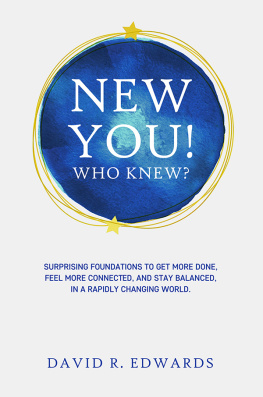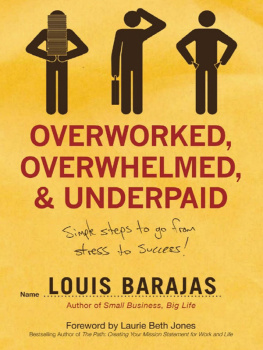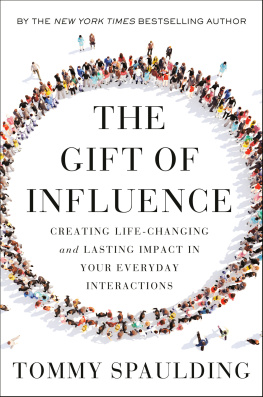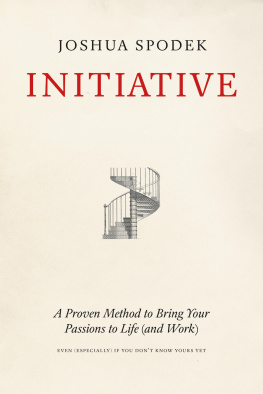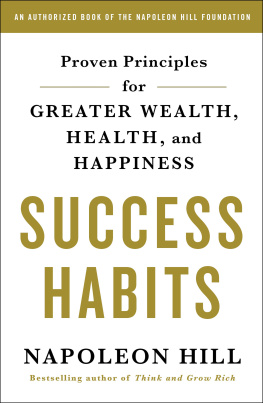Copyright 2022 by David R. Edwards
All rights reserved. It is not legal to reproduce, duplicate, or transmit any part of this document either by electronic means or in printed format. Recording of this publication is strictly prohibited.
This book is dedicated to:
First and always foremost to Linda, my wife of thirty-six years, friend, confidant, and eternal companion.
To all the people who strive to serve, minister, care for, or otherwise look beyond their own needs to graciously help others in small and large ways without a lot of fanfare or recognition. Finally, to you who will read this book and take some small step toward becoming the captain of living your own best life.
Book Structure How To Get The Most Out of It
This book has an introduction, two main sections, chapters, and skill segments within each chapter. Each chapter introduces a single core principle, has a quote or two to get your thinking going, and provides some sample affirmations and a blank PQ4R (PreviewQuestionsRead ReflectReciteReview) form. The skill segments discuss skills that help you incorporate that principle in real life. At the end of each chapter, I provide a summary of the skills and space for notes/inspiration. If you journal, that can also be a great place to note success, failure, insights, progress, and feelings.
Using the PQ4R process is a great starting place to review each chapter, develop your own questions, and start to glean your own insights. Learning is aided when you start with a question, rather than an aimless meander. When you go to the store, you dont wander around the whole store. You use your list (your goals) to get what you need and stay within budget. The material is designed to provide benefit even with minimal effort. As with anything worthwhile, if you put more effort into it, you will get more out of it. To this end, I share how to apply the PQ4R process to your own benefit in Appendix B; please check it out now.
The affirmations at the beginning of each chapter are samples that help you reinforce the skill segments. I encourage you to use any you think could help or create your own. If youre not familiar with affirmations and their power to reinforce self-guided change, I have included an easy-to-follow primer in Appendix A.
I encourage you to read the chapters in order because they build on each other. Within each chapter, the skill segments are not usually in any order, so I encourage you to skim or preview each chapter and ask yourself questions to help you grasp the concepts. The PQ4R form will help with that. Some skills will grab you more than others; some will seem more applicable in your situation than others. This is all normal. Each chapter is designed so that you can review it again later and get something else useful, something that you were not ready for before or that didnt seem relevant. While the principles are timeless, your ability or willingness to engage with them will vary over time. The book has wide margins and space for notes at the end of each chapter so that you can write notes, thoughts, insights, goals, or whatever strikes you. Use the book; it is yours, so make it work for you.
- Chapter 1 introduces your values as essential to the rest of the principles/tools discussed. Out of your values, your mission in life and vision of the future will be grounded. Out of your values, you will determine directions, set goals, and accomplish them, and more importantly, you will become the person exemplifying those values, a person of integrity. This is always a great place to start.
- Section 1, which comprises six chapters (27), deals with self-efficacy, or the exercise of control, which is key to getting things done.
- Section 2, containing three chapters (810), deals with self-compassion, the balance to self-efficacy and key to healthy self-esteem and connection with the people around you.
- Chapter 11 ties it all up and summarizes the principles, skills, and how they combine to help you create a balanced, achieving, connected life.
- The List of Tools summarizes tools and exercises found throughout the book.
- The Appendices describe always-helpful tools like affirmations and PQ4R.
If you dont mind being connected but out of control, you can skip the first section. If you dont mind being accomplished but a lonely jerk, you can skip the second section. Combined, they create the foundation, in balance, of an accomplished and connected whole. If you buy a pie, do you want just the crust or just the filling? If you buy a house, do you want just the garage and kitchen, or do you want bedrooms and a living room as well? If you have a puppy, do you buy just a collar or just a leash, or does it work better to have both together? The whole is usually preferred; why would you want to be anything other than whole yourself?
I wish you well on your journey through the book. It has been so much work, but a work of love and inspiration and science and potential and hope. I look forward to hearing how you use the principles and skills to accelerate progress on your personal journey.
Why Self-Efficacy?
There are two main sections of this book, each built on a foundation of personal values. This first section is about increasing your belief in and ability to control your life. Being out of control is not healthy or likely to lead to a desirable outcome, right? What if your entire life was out of control or manipulated by others like a puppet on strings? Is that desirable? For almost everyone, the answer is no.
Thats what self-efficacy is all about: helping you sit squarely in the captains chair of your life. There will always be outside forces that you cede some control to, like a job or the government. The problem starts when you dont feel like you have any control over the direction and pace of your life. This puts you squarely in the role of victim, rather than the more desirable role of captain.
Each chapter in this section shares principles and skills that help you exert greater control over your life.
- Principles are timeless ideas; they were useful and powerful three thousand years ago, are just as useful and powerful today, and will still be useful in another three thousand years. These principles connect you to the way people and life work, no matter what your current reality is.
- Skills are the talent and knowledge you need to apply the principles to daily life. Skills can start small, like learning to add and subtract, and develop over time and with effort, like learning to multiply and divide, geometry, algebra, et cetera.
The combination of principles and skills helps you succeed in all aspects of your life, including work, school, sports, hobbies, service, friendships, and families. Alignment with enduring principles and building skills based on those principles creates a solid foundation. There are a lot of trends that come and go, but these principles and skills will serve you well throughout your lifetime.
The principles taught in the next six chapters are in a specific order, so I encourage you to read and study them in order. The principles and skills build on each other, like a tree starts with roots, then a stem, then branches and leaves, and finally bears fruit. Once you have read through the chapters and have some sense of context and relation, you may choose to work on any one of them based on your needs at that time. Within each chapter, the skills are not in any order, so once you have done your review, you can focus on whatever part youre inspired to.
- Chapter 2Awareness and Feedback
- If you want to get somewhere, anywhere specific, you need start and end points. Your self-awareness is your starting pointno matter where your end point is. It cant be skipped. Feedback is critical to developing a clear understanding of your beginning and of your progress along the way. For these reasons, these concepts are covered in the first chapter in this section.

